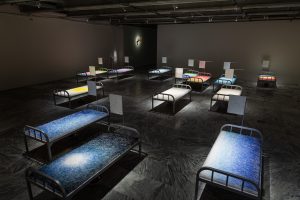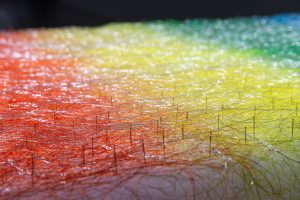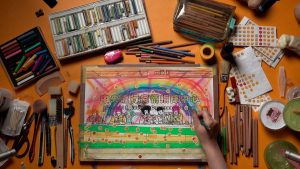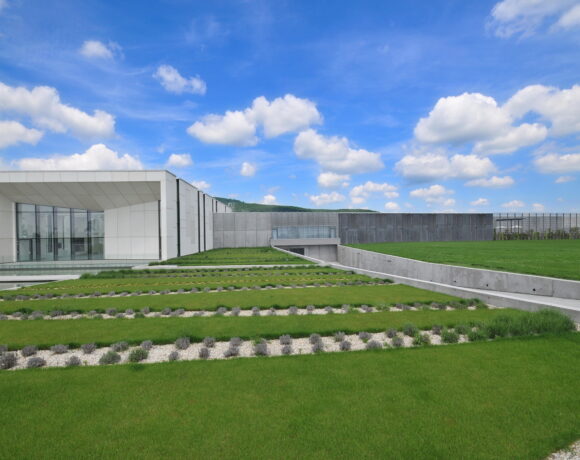The TFAM, or the Taipei Fine Arts Museum, was inaugurated in 1983 and has a one hundred twenty-five members staff who are involved in research, organization of exhibitions, collection and conservation of works, education, marketing and so on. Its collection boasts about 5 thousand works, testifying to the developments of the Taiwanese artistic community, from the period of Japanese domination to the present day. The mission of the Museum is to promote the conservation, research, development and dissemination of modern and contemporary art in Taiwan, promoting exchanges and encouraging the understanding and participation of the non-specialized public. In this sense, the participation in the Venice Biennale by Taiwanese artists (in the historic Palazzo delle Prigioni), the organization of the Taipei Biennale and the Taipei Arts Awards are three precise signs of this desire for affirmation, signals that must be included in a global broadening cultural horizons perspective.
Now, precisely in this perspective of activity at three hundred and sixty degrees, the museum hosts, on the various floors of the building, numerous exhibitions, among which we mention “The Soul Trembles” by Shiota Chibaru, while we pause to analyze more closely a group exhibition that it compares authors from various backgrounds, touching on the theme of the border where man and machine, in the post-capitalist age, tend to get confused and become labile. The title is: “Affect Machine: self-healing in the post-capitalist era”; the authors involved are: John Akomfrah, Olafur Eliasson, Chen Hui-Chiao, Rebecca Horn, Lee Chang Ming, Chu Hao Pei, Cam Xanh, Chen Chen Yu.
It will also be pure coincidence, yet this exhibition is really very interesting, since following the Covid-19 epidemic has been shown (by a group of researchers from the USC in Los Angeles) that trust in technology has increased, since that the various periods of lockdown, forcing us to rely on the network and online operations, has changed our attitude towards technology, which may affect in the long term precisely the way people interact with machines. Moreover, social distancing, remote work, distance learning, has already forced many people and many companies to adapt and experience a different life (even with psychological consequences that are not always positive), although ultimately the main consequence seems to be a greater appreciation of the role of technology in our future.
Ultimately, starting from the assumption that the car has become a daily presence in our lives (from the computer, to the robot lawnmower, from Alexa’s voice, to the navigator’s voice, from the computerized mobile phone to smartwatches …), the “machines” are at center of the works of the artists in the exhibition.
Let’s start with John Akomfrah, British artist and director, who makes use of a multimedia language where slides and films overlap in a backward path that touches on denouncing themes such as the colonial past, climate change, considerations on wild nature, investigations on different global migrations. In this case the technology is bent to socio-political denunciation.
On the same way of feeling we find the works of Olafur Eliasson: real experimental and interdisciplinary structures, aimed at the problems of today’s world, such as that of clean and sustainable energy. In this sense, his work is an example to the whole world, both for the moral values he embodies and for the research he brings as an added value. Obviously the team of collaborators that Eliasson has put together over years and years of work is not a secondary aspect of his most famous interventions in the four corners of the world.
Then we find Chen Hui-Chiao, who works mainly through the installation, drawing inspiration from astrological, mystical and literary themes, although the creative process is entirely played out in terms of rationality and meticulous construction. This is followed by Rebecca Horn‘s performative installations and technological devices, which we can define as “classic” bodily extensions intended to make the assumption “ornamentation a crime” invalidate.
Lee Chang Ming is a Singaporean artist and photographer interested in the themes of intimacy, gender issues, the environment and the everyday. We are therefore faced with uncomfortable issues related to the subjective use of looking and the photographic medium as a recording tool, without however assuming manipulation or post-production processes.
With Chu Hao Pei, a visual artist from Singapore, the interest is turned to the interrelationships between culture and environment, looking for the physical, sociological and emotional connections that man establishes with the landscape that surrounds him, be it wild or man-made. The works put in light what is neglected and accidental, intertwining the processes of engagement, documentation and research to examine the complexity of loss and the possibility of a rebirth, all due to fallacious cultural, political, economic and social models.
Cam Xanh‘s concrete and conceptual work explores the visual similarities between biological and information coding, often based on texts and poems developed from previous performances, to then take the form of installation, sculpture, painting, video. His works draw heavily from his personal life, while remaining fully aware of the geopolitical and historical context in which they are rooted, revealing political and not just aesthetic comments.
Finally we come to Chen Chen Yu, a multimedia artist, who examines the landscape as it is encoded by the rampant digitization and interactivity between man, commodity and image. Working with moving images, objects and installations, he juxtaposes various media, oscillating between subject and spectacle, right where the boundaries between nature and culture are thinned, becoming imperceptible.
Ultimately this exhibition, signed by Yu-Chieh Li and Gladys Lin, through the arrangement of immersive or multimedia works of art, proves to be of great relevance, because, in bringing out a pervasive intertwining between body and machine, it makes us meditate on a future post-pandemic.
Giuseppina Valdesserra
Info
AA.VV., Affect Machine: Self-healing in the Post-Capitalist Era
18/09/2021 – 19/12/2021
TFAM, gallerie EF
No.181, Sez. 3, Zhongshan N. Rd., Zhongshan Dist., Taipei City 10461,
Taiwan, ROC +886 2 25957656
info-tfam@mail.taipei.gov.tw
 Affect Machine: Self-healing in the Post-Capitalist Era, 2021, exhibition view. Courtesy of Taipei Fine Arts Museum
Affect Machine: Self-healing in the Post-Capitalist Era, 2021, exhibition view. Courtesy of Taipei Fine Arts Museum
 Chen Hui-Chiao, A Room with a View, 2018, mixed mediums (needles, thread, military cots, embroidered towels, basins, toothbrushes, toothpaste, steel cups), 16 pieces, 90 × 200 ×1 40 cm each. Courtesy of the artist and Taipei Fine Arts Museum
Chen Hui-Chiao, A Room with a View, 2018, mixed mediums (needles, thread, military cots, embroidered towels, basins, toothbrushes, toothpaste, steel cups), 16 pieces, 90 × 200 ×1 40 cm each. Courtesy of the artist and Taipei Fine Arts Museum
 Chen Hui-Chiao, A Room with a View (partial), 2018, mixed mediums (needles, thread, military cots, embroidered towels, basins, toothbrushes, toothpaste, steel cups), 16 pieces, 90 × 200 × 140 cm each. Courtesy of the artist and Taipei Fine Arts Museum
Chen Hui-Chiao, A Room with a View (partial), 2018, mixed mediums (needles, thread, military cots, embroidered towels, basins, toothbrushes, toothpaste, steel cups), 16 pieces, 90 × 200 × 140 cm each. Courtesy of the artist and Taipei Fine Arts Museum
 Chen Chen Yu, Here Each Vibration Long Away (film still), 2021, 2-channel video, 60 minutes. Performer: Lazy Miu.ASMR, courtesy of the artist
Chen Chen Yu, Here Each Vibration Long Away (film still), 2021, 2-channel video, 60 minutes. Performer: Lazy Miu.ASMR, courtesy of the artist
 John Akomfrah, The Airport, 2016, three channel HD colour video installation, 7.1 sound, 53 minutes. Courtesy of the artist and Taipei Fine Arts Museum
John Akomfrah, The Airport, 2016, three channel HD colour video installation, 7.1 sound, 53 minutes. Courtesy of the artist and Taipei Fine Arts Museum
 Chu Hao Pei and Lee Chang Ming, Beneath the Bodhi and Banyan, 2018, mixed mediums (expired film stock, digital prints, acrylic and aluminium boards, documents), dimensions variable. Courtesy of the artist and Taipei Fine Arts Museum
Chu Hao Pei and Lee Chang Ming, Beneath the Bodhi and Banyan, 2018, mixed mediums (expired film stock, digital prints, acrylic and aluminium boards, documents), dimensions variable. Courtesy of the artist and Taipei Fine Arts Museum

is a contemporary art magazine since 1980






NO COMMENT